18 Mexican Beaches That Remain Safe For Tourists
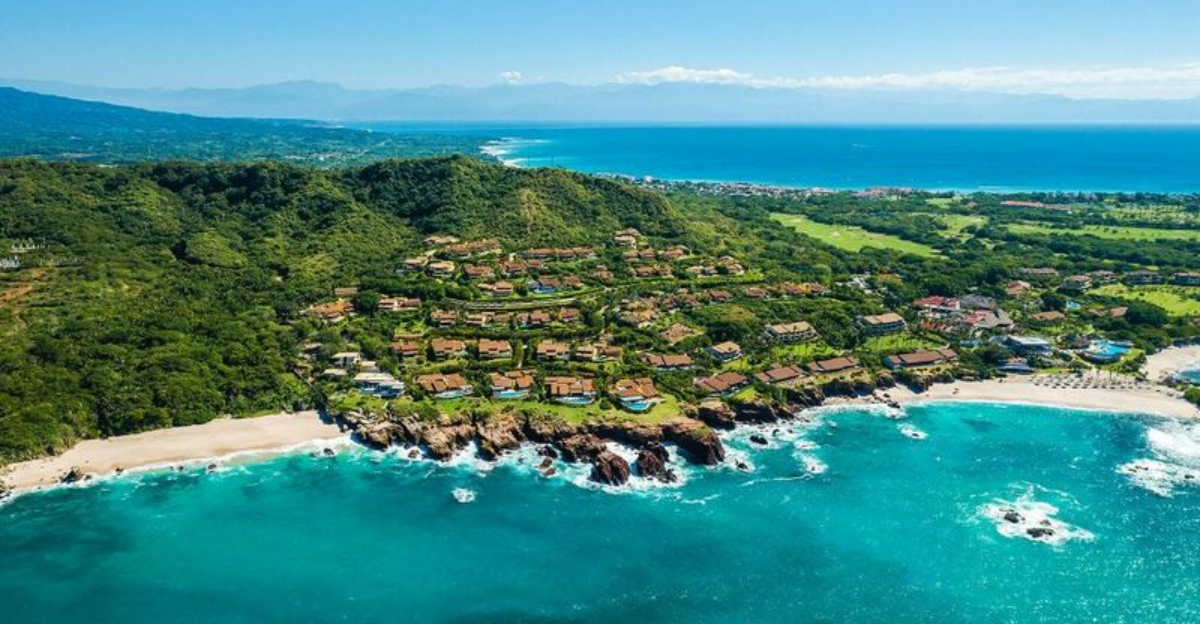
Mexico’s coastline stretches over 5,800 miles, offering countless beautiful beaches for travelers to explore. While some areas have safety concerns, many Mexican beaches remain peaceful havens where tourists can relax without worry.
From the crystal-clear waters of the Caribbean to the stunning Pacific coast, these 18 beaches combine natural beauty with strong safety records and tourist-friendly environments.
1. Playa del Carmen
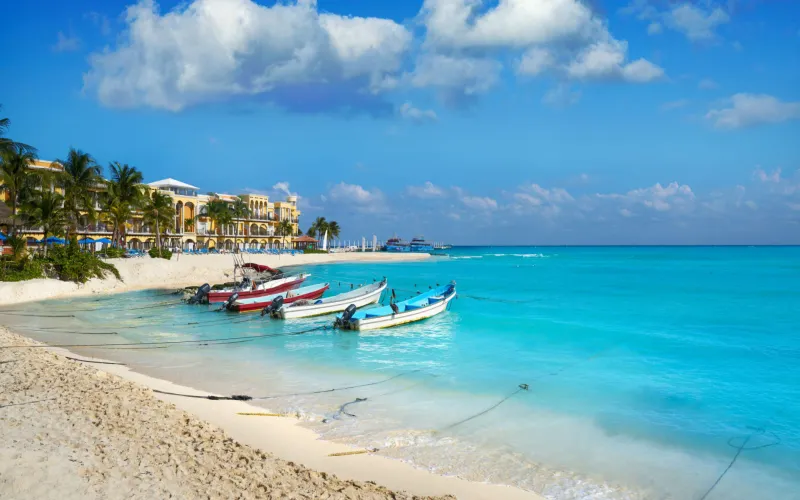
Located in the heart of the Riviera Maya, this beach town balances vibrant energy with family-friendly safety. The pedestrian-only Fifth Avenue runs parallel to the shore, creating a buffer zone that keeps the beach area peaceful.
Local police maintain a visible presence, especially in tourist zones. Many resorts offer private beach access with additional security staff.
English is widely spoken here, making it easy to navigate or ask for help if needed. The clear waters have gentle waves perfect for swimming, and the well-maintained beaches are regularly cleaned and patrolled.
2. Tulum’s Public Beaches

Away from the crowds, Tulum offers pristine public beaches where safety concerns are minimal. Tourism police patrol regularly, creating a secure environment for visitors enjoying the powdery white sand.
The laid-back atmosphere attracts travelers seeking tranquility rather than wild parties. Many beaches here sit below the famous Mayan ruins, adding a cultural dimension to your beach day.
Families appreciate the shallow entry points and calm waters. Local vendors respect personal space, with less aggressive selling than at other Mexican beach destinations. The main beaches have lifeguards during peak hours.
3. Isla Mujeres
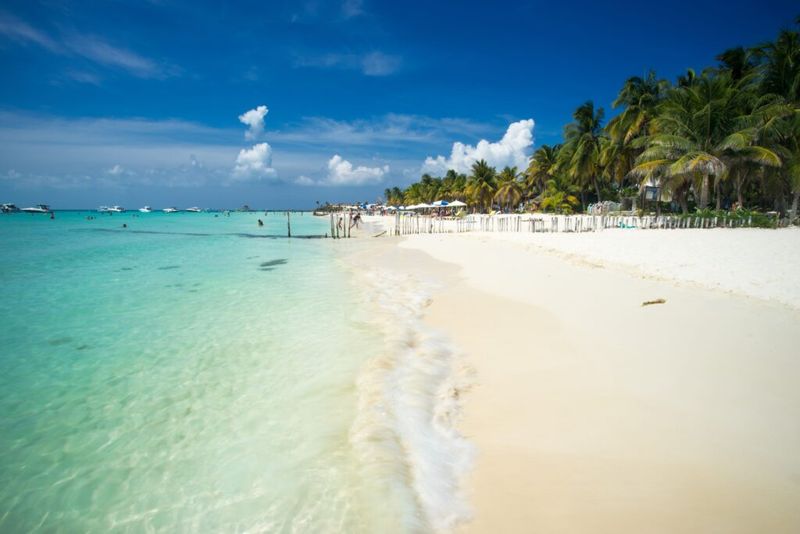
Just a quick ferry ride from Cancun lies this peaceful island sanctuary where golf carts replace cars. The crime rate here remains exceptionally low, making it perfect for travelers concerned about safety.
Playa Norte features shallow, crystal-clear waters that extend far from shore. Families with children can wade out hundreds of feet while still touching the sandy bottom.
The island’s small size creates a community feeling where locals look out for visitors. Most accommodations are small hotels or guesthouses rather than massive resorts, fostering personal connections between staff and guests that enhance security.
4. Cancun’s Hotel Zone
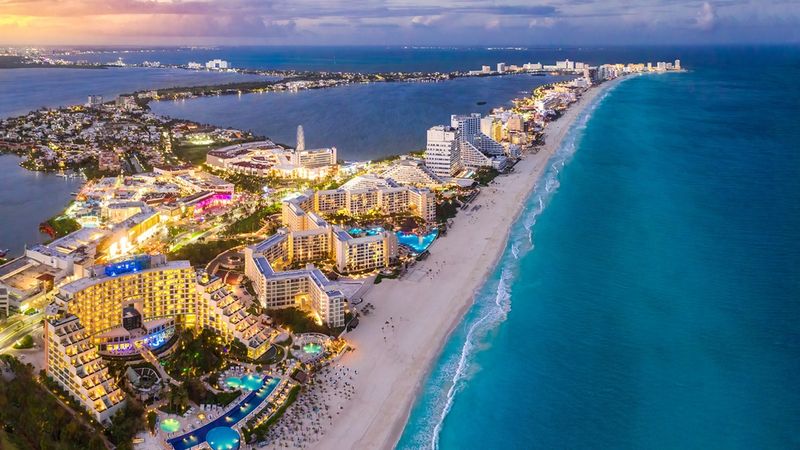
Despite its party reputation, Cancun’s Hotel Zone ranks among Mexico’s safest beach areas. The narrow strip of land is essentially one long beach with hotels on one side and the lagoon on the other, making it easily monitored by security.
Tourism drives the local economy, so protecting visitors is a top priority. Hotel security teams coordinate with local police to maintain safety.
Beaches are well-lit at night, and many hotels offer beach access only through their properties. The main beach areas have lifeguards, first aid stations, and clear warning flags about swimming conditions.
5. Akumal
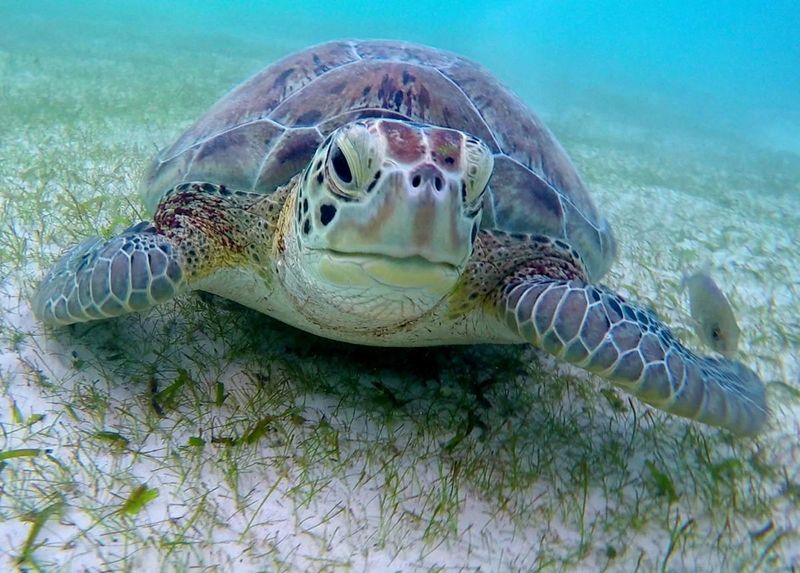
Famous for swimming with sea turtles, this small beach town maintains a peaceful atmosphere where safety issues are rare. The main beach has controlled access points and eco-guides who monitor both wildlife and visitor safety.
Many visitors are families or nature enthusiasts, creating a respectful environment. The shallow bay is protected by a reef, eliminating dangerous currents.
Local businesses coordinate closely with authorities to keep the area secure. Most accommodations are small-scale and family-run, fostering community oversight. Akumal’s limited nightlife means fewer intoxicated tourists and a quieter, safer evening atmosphere.
6. Sayulita
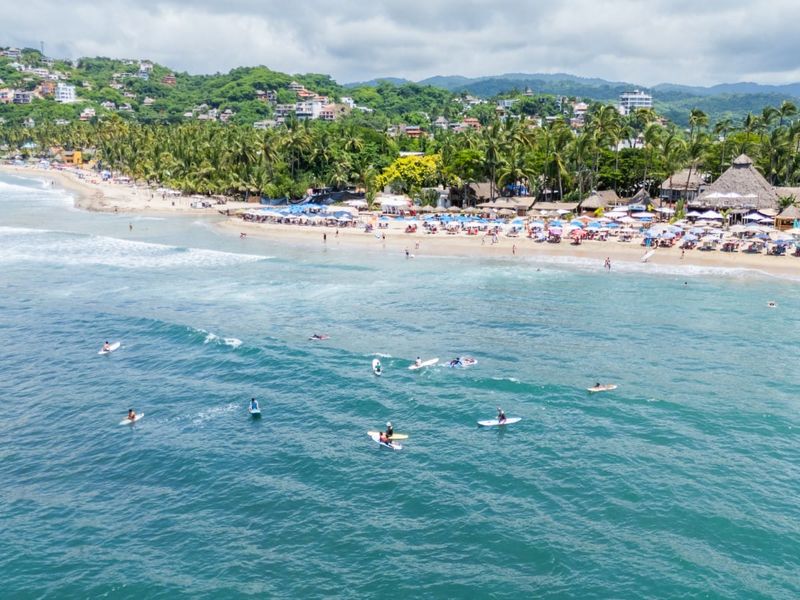
Once a hidden surf town, Sayulita has evolved into a bohemian beach destination where violent crime remains virtually nonexistent. The small-town atmosphere means locals notice outsiders, creating natural community surveillance.
The main beach is compact and easily monitored. Surfing culture dominates here, bringing an easygoing vibe where people look out for each other in the water.
Families and solo female travelers report feeling comfortable walking around, even in evening hours. The town’s popularity with international expats has led to community-organized beach cleanups and safety initiatives. Most businesses close relatively early, minimizing late-night problems.
7. Puerto Vallarta’s Zona Romántica
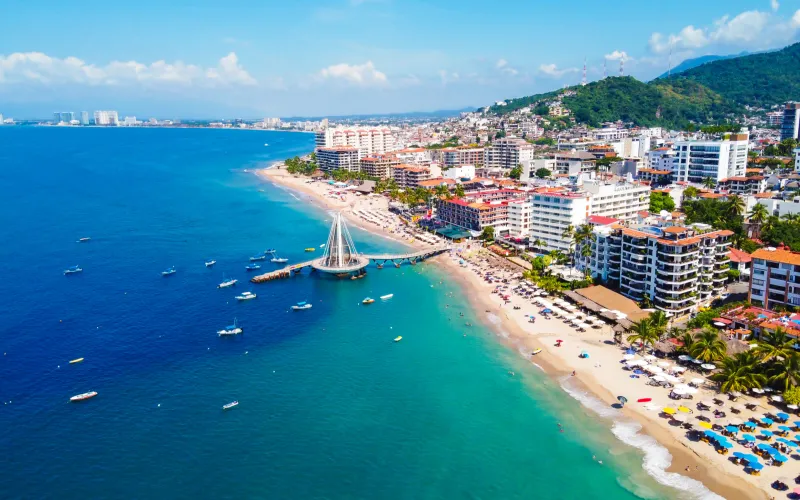
Nestled between the mountains and Banderas Bay, this charming beach area boasts excellent safety records. The LGBTQ-friendly zone welcomes diverse travelers with open arms and vigilant community oversight.
Police regularly patrol the beachfront and adjoining streets. Many businesses participate in neighborhood watch programs specifically designed to protect tourists.
The compact layout means you’re never far from help if needed. Playa Los Muertos, despite its ominous name, features calm waters and beach clubs with security staff. The pier area remains well-lit and populated even during evening hours.
8. Huatulco’s Bays
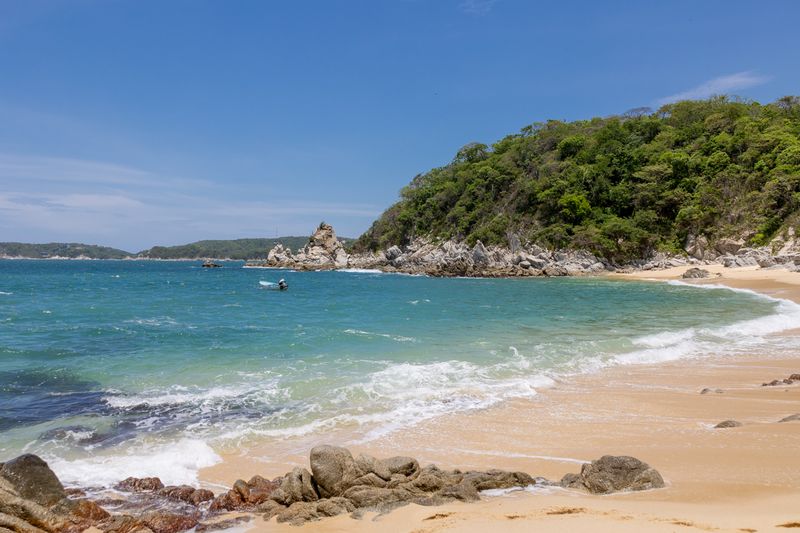
Hidden along Oaxaca’s coastline, Huatulco’s nine bays offer 36 beaches with remarkably low crime rates. The federal government developed this area as a planned tourist destination with safety as a priority.
Many beaches remain accessible only by boat, naturally limiting potential problems. The surrounding national park status means environmental protection officers regularly patrol both land and water.
Resort areas have private security, while public beaches benefit from tourism police presence. The local population depends heavily on tourism, creating a community invested in visitor safety. Water quality monitoring ensures safe swimming conditions.
9. Isla Holbox
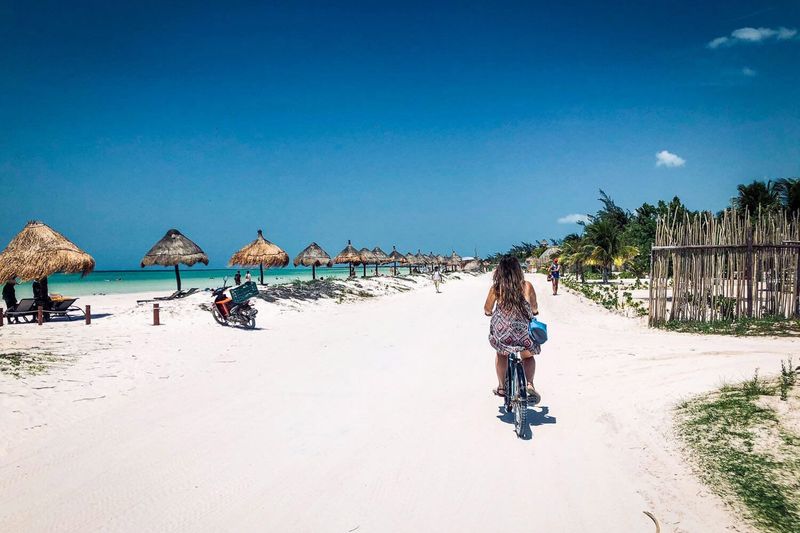
Car-free and carefree, this island paradise north of Cancun offers a safe haven for beach lovers. The lack of vehicles creates a peaceful environment where golf carts and bicycles are the main transportation.
The island’s small size and limited access points make it naturally secure. Most visitors are eco-tourists and couples seeking relaxation rather than partying.
Shallow waters extend far from shore, eliminating dangerous swimming conditions. The island’s main income comes from whale shark tourism and hospitality, creating a community invested in maintaining its safe reputation. At night, the beaches are dark for turtle nesting but the town remains well-lit and welcoming.
10. Maroma Beach
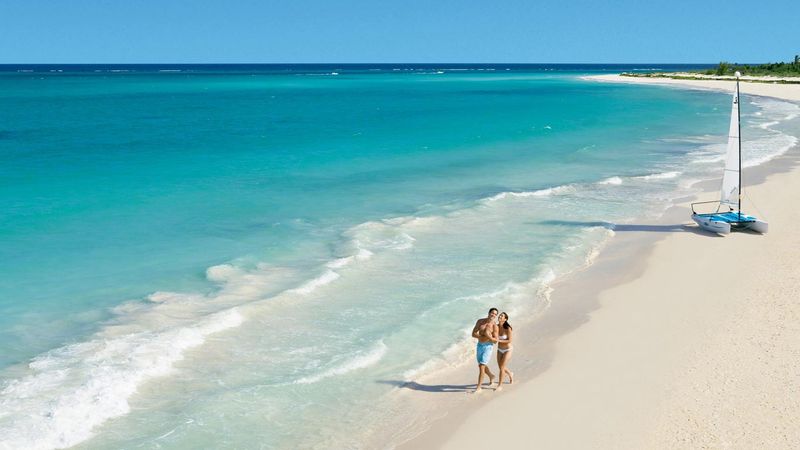
Consistently ranked among the world’s best beaches, Maroma offers exclusivity that naturally enhances safety. Most beach access comes through luxury resorts with comprehensive security systems and trained staff.
The limited public access points are well-monitored. The beach itself features powdery white sand and crystal-clear waters without dangerous currents.
Resort security teams patrol the shoreline throughout the day and night. The isolated location between Cancun and Playa del Carmen means fewer day-trippers and a more controlled environment. Many visitors never leave their resort properties, further reducing potential safety concerns.
11. Zihuatanejo
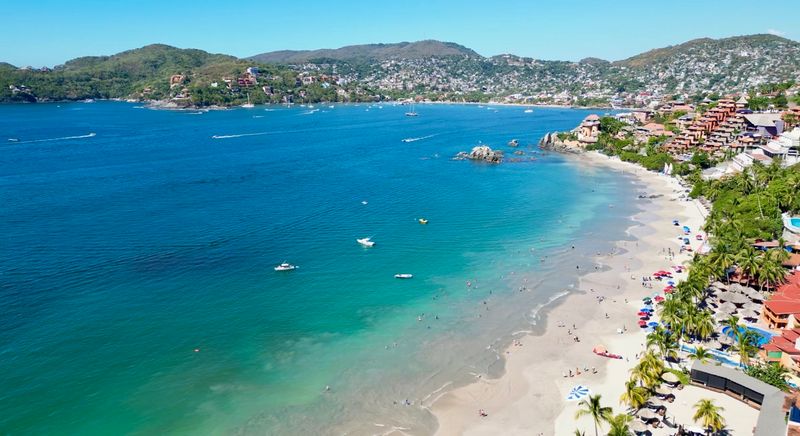
Made famous by the film “Shawshank Redemption,” this fishing village offers beaches where safety concerns remain minimal. The main beach, Playa La Ropa, curves gently along a protected bay with calm waters ideal for families.
Local fishermen launch their boats daily, creating a constant, reassuring presence. The community atmosphere means unusual activities get noticed quickly.
Unlike nearby Ixtapa’s high-rise hotels, Zihuatanejo maintains smaller accommodations where staff recognize guests. The beach area has limited access points, all visible from beachfront restaurants and hotels. Evening beach walks remain popular with both tourists and locals.
12. Cabo San Lucas Medano Beach
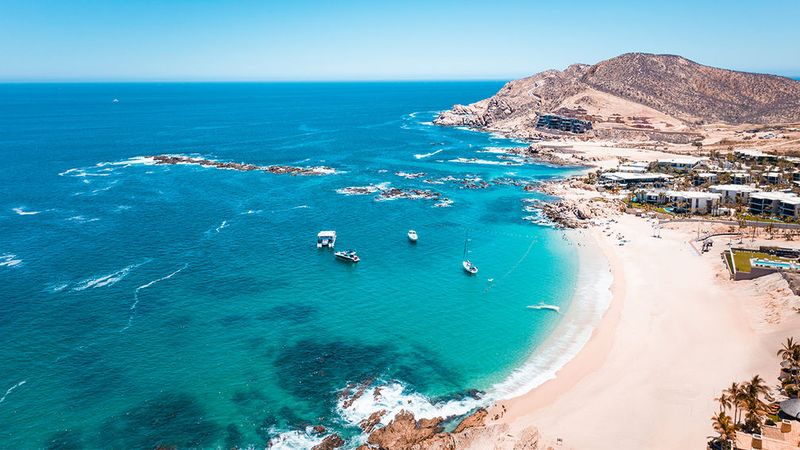
As Cabo’s main swimming beach, Medano benefits from heavy investment in tourist safety. Hotel security teams coordinate with local police, creating overlapping safety zones along the two-mile stretch of sand.
The beach faces the protected Sea of Cortez rather than the open Pacific, eliminating dangerous undertows. Water sports operators must maintain licenses that include safety requirements.
Despite Cabo’s party reputation, family zones remain separate from areas with beach bars. The beach is well-lit at night with regular patrols. Major hotels have medical staff on site, and the compact tourist zone means emergency services can respond quickly.
13. San José del Cabo
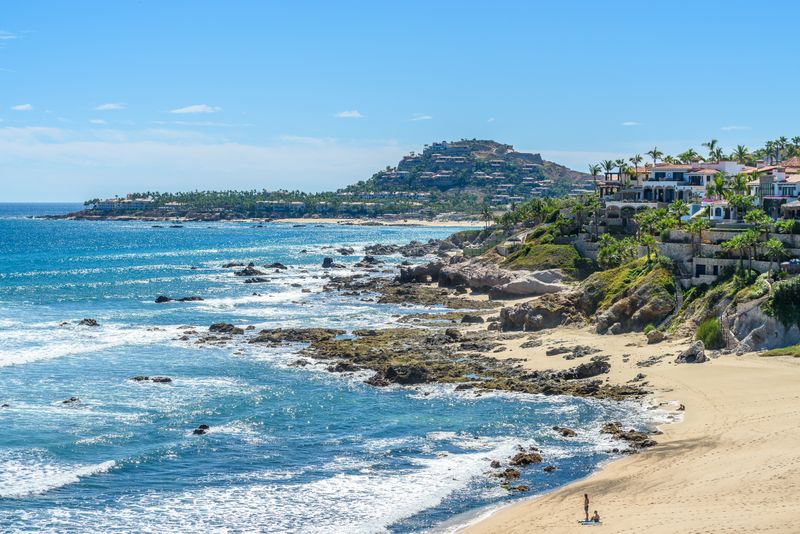
Just 20 minutes from party-centered Cabo San Lucas, this sophisticated beach town offers a dramatically different experience. The family-oriented atmosphere attracts travelers seeking tranquility over nightlife.
The main beach area features hotels with controlled access points and 24-hour security. Many beaches here have protective coves that create natural swimming areas.
The historic downtown sits just blocks from the shore, creating a cohesive community where tourists and locals mix comfortably. Art walks and farmers markets foster positive interactions. The estuary nature preserve adds another layer of regular monitoring by environmental officers.
14. Nuevo Vallarta
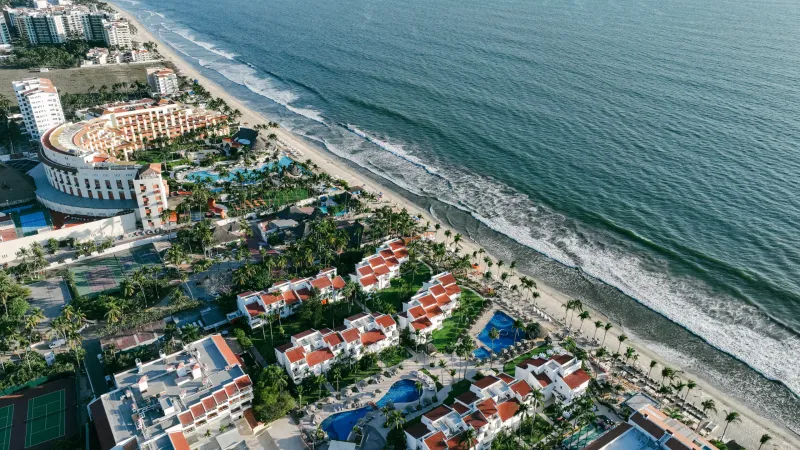
North of Puerto Vallarta, this planned beach community was designed with visitor safety in mind. The master-planned layout includes controlled access points and private security throughout the beachfront zone.
The wide beach stretches for miles with gentle waves perfect for swimming. Many properties have beach clubs with additional monitoring.
Golf courses and marina areas create buffer zones between the beach and public roads. The family-friendly atmosphere attracts multi-generational travelers rather than party-seekers. Water quality testing occurs regularly, and beach cleaning happens daily.
15. Mayakoba
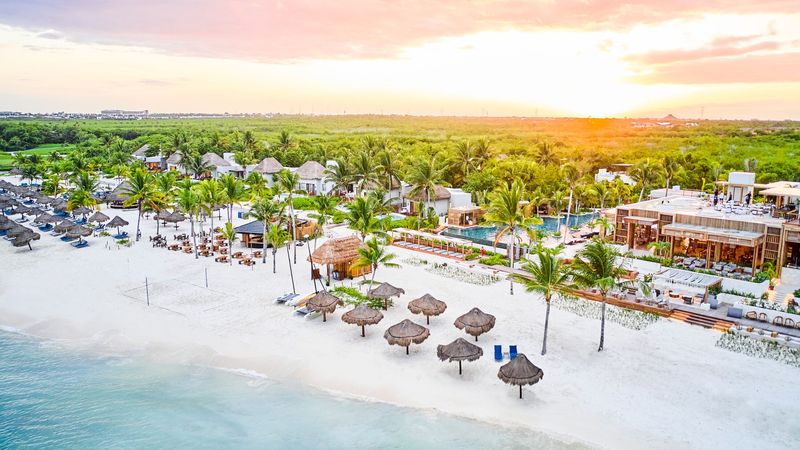
Encompassing four luxury resorts sharing a pristine beach, Mayakoba offers exceptional security within its 620-acre property. The controlled-access community features 24-hour security at all entry points and regular patrols.
The beach remains semi-private, with most access through the resorts. Environmentally protected mangrove areas create natural boundaries around the property.
Golf carts and boats are the primary transportation within the complex, creating a controlled environment. Each resort has medical staff on site and coordinates with the others on security matters. The isolated location between Cancun and Playa del Carmen means you’re away from urban concerns.
16. Mazatlán’s Golden Zone

Following significant security improvements, Mazatlán’s main tourist beach area has reclaimed its reputation for safety. The revitalized malecón (beachfront promenade) features constant police presence and excellent lighting.
Tourism police patrol on ATVs and bicycles, remaining highly visible along the beach. The area has seen major investment in security cameras and emergency call stations.
Many hotels have direct beach access with security checkpoints. The Golden Zone concentrates tourist activities in a easily-monitored area. Local business owners participate in safety initiatives, creating community oversight throughout the beachfront.
17. Punta Mita
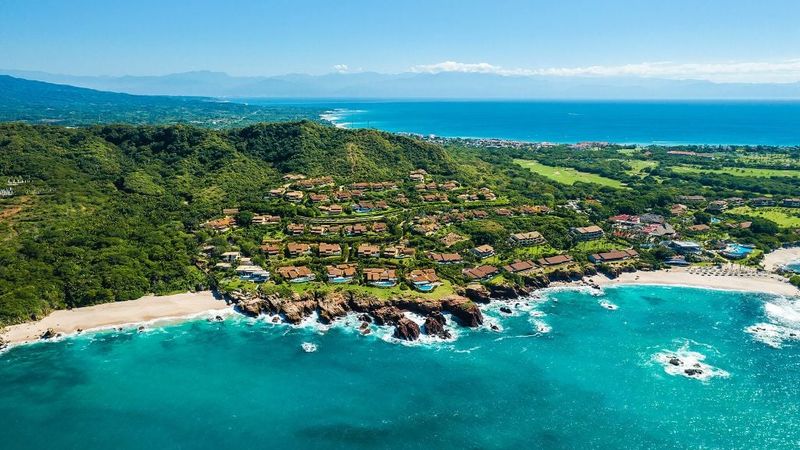
Occupying a private peninsula north of Puerto Vallarta, this gated community offers beaches with extraordinary security measures. Access is strictly controlled through a single entry point with 24-hour guards.
The beaches blend public access areas with sections exclusive to luxury hotels and private villas. The remote location naturally limits outside visitors.
Resort staff monitor beach activities and water conditions throughout the day. The area attracts wealthy travelers and celebrities who demand high security standards. Many beaches have coral reefs that create natural swimming pools with minimal currents.
18. Loreto Bay
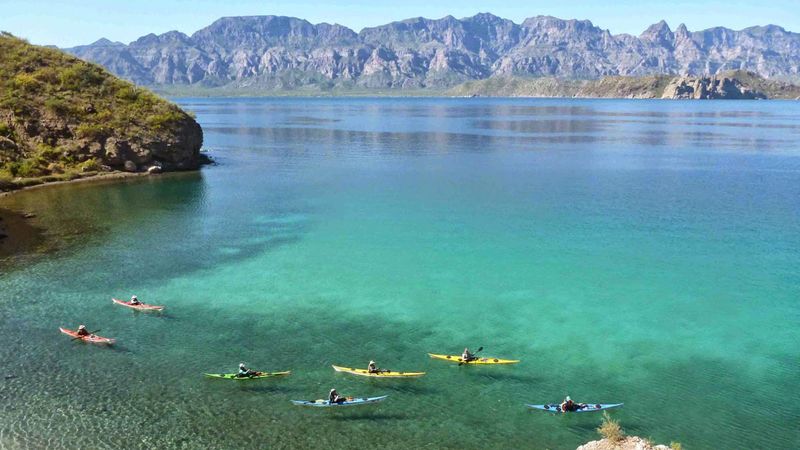
Nestled on the Sea of Cortez in Baja California Sur, this small beach town offers remarkable safety within a national marine park. The remote location naturally limits potential problems, while the small population creates strong community oversight.
The beaches face protected waters designated as a UNESCO World Heritage site. Conservation officers regularly patrol both land and water areas.
Most visitors come for nature and outdoor activities rather than nightlife. The main beaches have gentle entry points without dangerous currents. Local fishing cooperatives maintain a constant presence on the water, creating informal surveillance.
